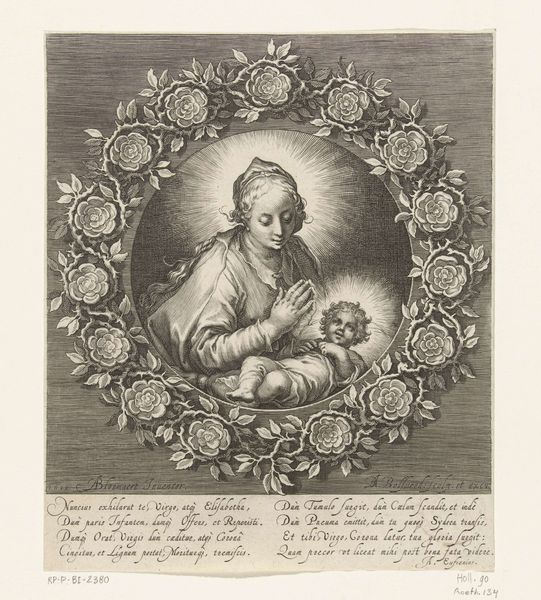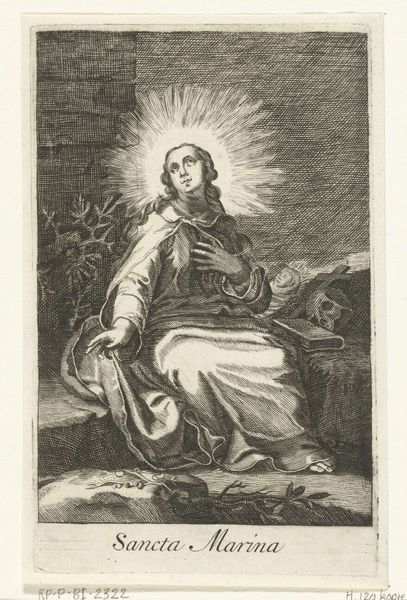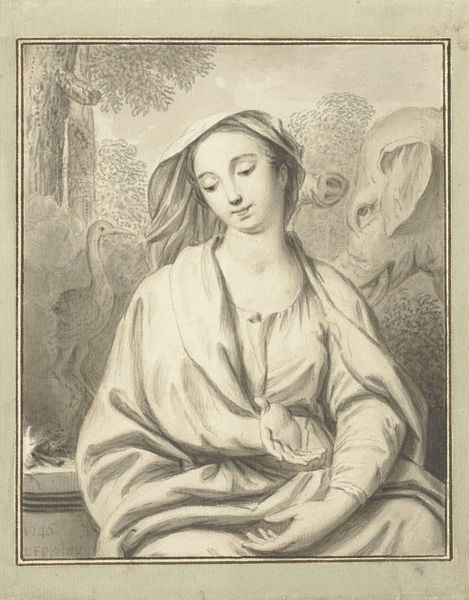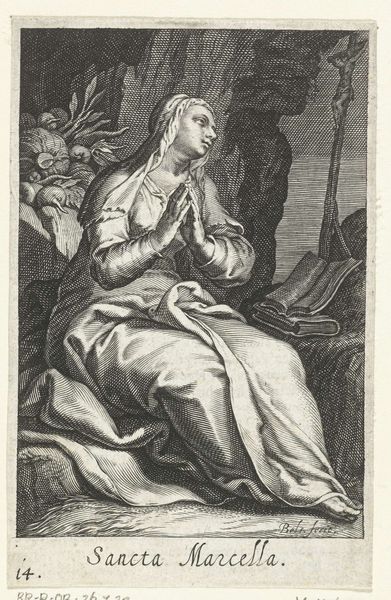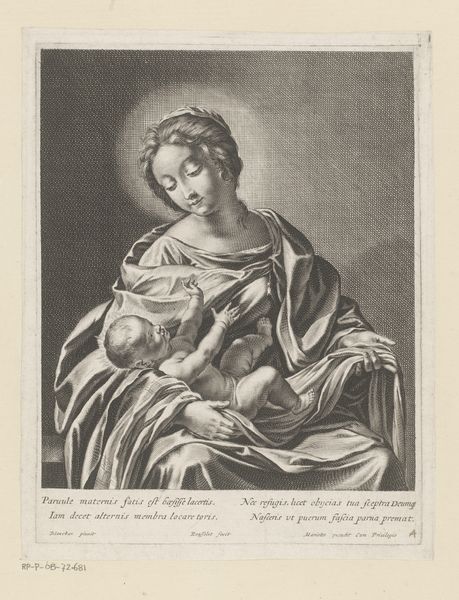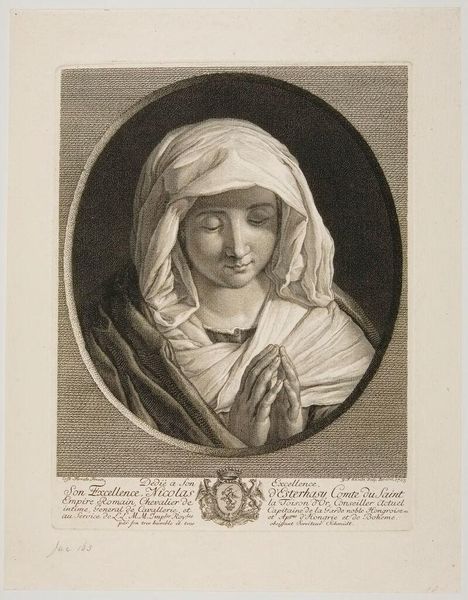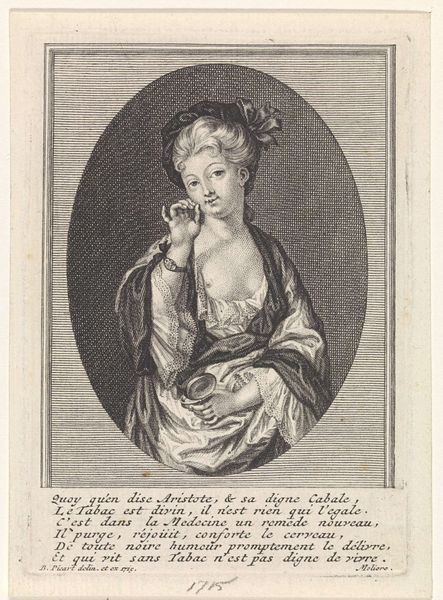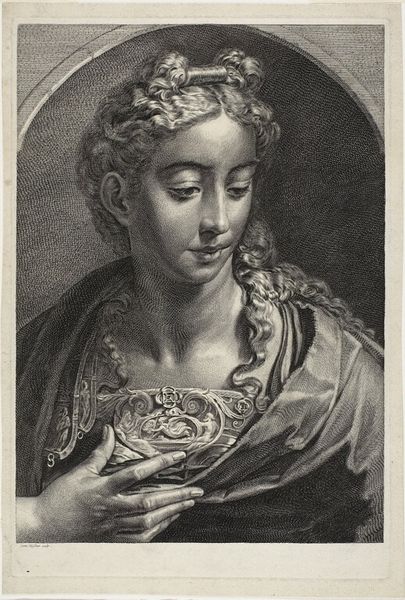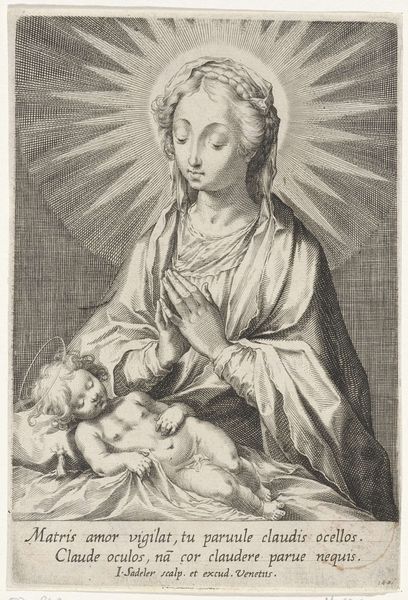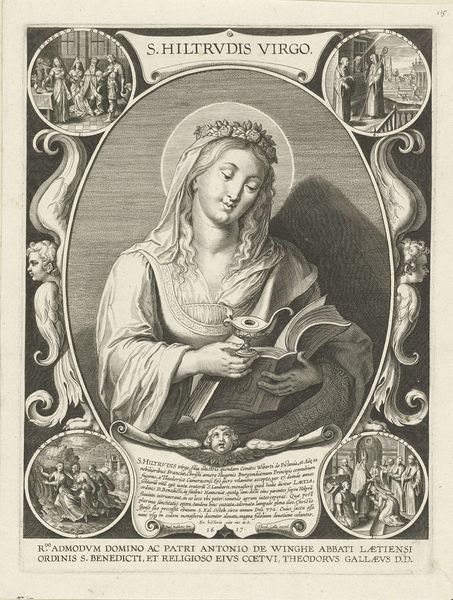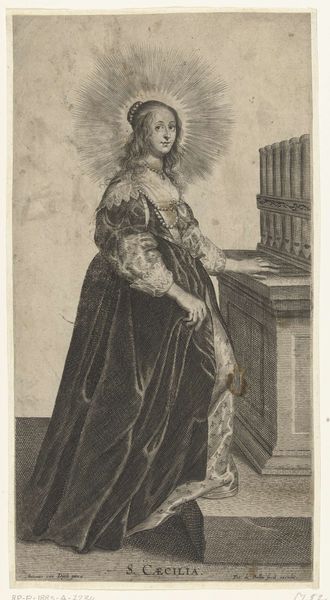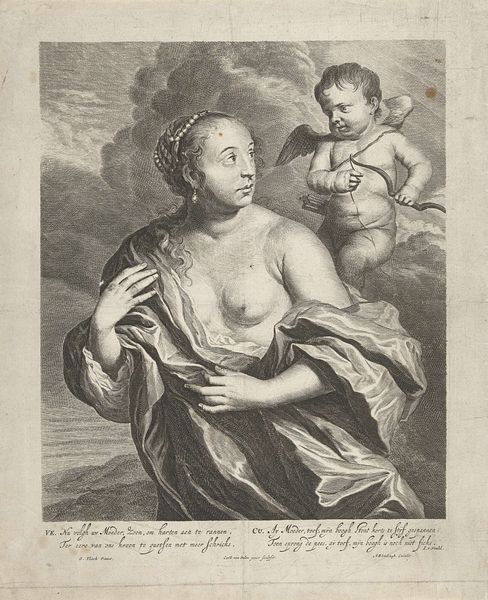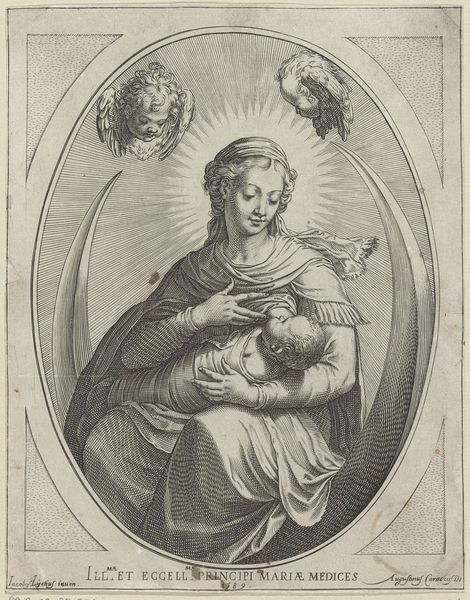
print, engraving
#
portrait
# print
#
old engraving style
#
figuration
#
11_renaissance
#
engraving
Dimensions: height 243 mm, width 175 mm
Copyright: Rijks Museum: Open Domain
Editor: We’re looking at "Maria aanbidt het Christuskind," or "Mary Adoring the Christ Child," an engraving by Cornelis Galle I, dating from around 1586 to 1610. It's remarkable how detailed and delicate the lines are. What strikes you most about the composition? Curator: The success of this engraving lies in the rhythmic interplay of light and shadow. Galle manipulates the incised lines to generate gradations, creating a pictorial dynamic and bestowing a luminous quality upon Mary and the child. Notice how the converging lines behind Mary's head not only suggest divinity, but actively thrust her forward into our space. Editor: So the lines aren't just descriptive, but active elements? I see what you mean about her being brought into our space by those lines of light! How would you consider the visual weight of Mary versus that of Christ? Curator: Interesting. While Mary occupies a larger area of the composition, and her drapery establishes strong diagonal lines creating movement, the Christ Child anchors the entire piece. His slumbering form presents a grounded horizontality, providing stability in contrast to Mary’s implied verticality and upward gaze. It is worth contemplating the tension created between the solid infant, whose immobility assures, and Mary, who actively directs herself to devotion. Editor: That tension definitely makes the work more engaging than just a straightforward image of adoration. I hadn’t noticed that push and pull at first. Thanks for pointing it out. Curator: Indeed. Close formal analysis reveals nuanced relationships within the artwork. Line, shape, light—these intrinsic elements communicate meaning in sophisticated ways. Editor: I learned so much today looking at these lines and thinking about composition.
Comments
No comments
Be the first to comment and join the conversation on the ultimate creative platform.
